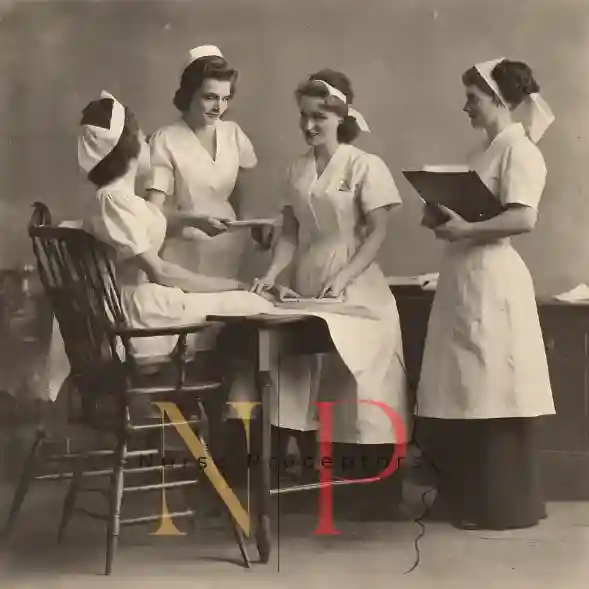Introduction to Nursing Preceptorship
Nursing preceptorship is a critical component of nursing education that bridges the gap between theoretical knowledge and real-world clinical practice.
As an essential stepping stone in your nursing career journey, this experience enables future nurses to develop their clinical skills, gain confidence, and build relationships with experienced mentors.
To ensure a successful and rewarding preceptorship experience, it’s crucial to understand the role of nurse preceptors, the expectations, and best practices for success.
What is Nurse Preceptor?
A nurse preceptor is an experienced and licensed clinician who supervises, teaches, and guides nursing students or newly graduated nurses during their clinical rotations.
A nurse preceptor is a role model who pairs with novice nurses and students to facilitate teaching-learning in their field settings.

It is an individualized teaching and learning approach for novice nurses and students are assigned to one experienced nurse or clinical supervisor.
Their primary role is to facilitate the transition of theoretical learning to real-world clinical practice, ensuring that students develop the necessary skills and competencies to become confident and proficient nurses.
Nurse preceptors are essential in all levels of nursing education, including bachelor’s, master’s, post-graduate, and doctoral degree programs.
The Emergence of Nursing Preceptorship
Nursing preceptorship is not a newly conceived idea. From the origin of modern nursing, during the times of Florence Nightingale, it was assumed that senior nurses would help newly graduated nurses and students in learning new skills and helping them in the care of their patients.

Unfortunately, the concept of nursing preceptorship became faded by the time until 1960 when nurse practitioner programs in the United States revived that idea for student nurses in clinical teaching. Formal preceptorship programs were introduced in the United States and experienced nurses started to help students in their educational and learning activities.
In the beginning, it was believed that nurses cannot teach and they don’t have broad exposure to clinical practices, so physicians were supposed to be the preceptors. But the main problem at that time was that nursing education from the hospitals to the nursing institutions rise the acquisition of nursing diplomas and nurses were granted staff nurse positions immediately after their diploma.
Newly graduated nurses were unable to assume all the patient care responsibilities in their clinical practices. The phenomenon was referred to as “reality shock”. Since 1970, significant changes were made in the teaching and learning approaches and the nursing preceptorship program started the journey to its rise.
Today, nursing preceptorship has a significant role in nursing education and experience. It has become an integral part of nursing teaching and learning in clinical settings where newly graduated nurses and students are facilitated to achieve their professional grooming.
Role of a Nurse Preceptor
Nurse preceptor has many roles in the clinical and educational settings. Nurse preceptors play a vital role in nursing education as:

What are the Challenges of Preceptorship in Nursing?
Nursing preceptorship is a multidimensional role. Nurse preceptors are supposed to provide complete nursing care to their patients as well as teaching their preceptees.
Research fostered the concept that nurse preceptors are overburdened during their clinical experience because, at the same time, they provide nursing care to their clients and teach nursing students and novice nurses. Many factors can affect the quality of preceptorship between the preceptor and preceptee such as:
How to Become a Nurse Preceptor?
Becoming a nurse preceptor requires a strong foundation in nursing education, clinical experience, and a passion for teaching and mentoring others. To become a nurse preceptor, a nurse must:

- Hold a bachelor’s degree or higher in nursing education.
- Have an unencumbered license to practice in the state where the preceptorship will take place to fulfill the legal and professional requirements.
- Possess clinical expertise in a specialty directly related to the associated clinical rotation.
- Demonstrate essential qualities such as enthusiasm for teaching, empathy, effective communication, and the ability to promote autonomy.
Benefits of Preceptorship in Nursing
Serving as a nurse preceptor offers numerous advantages for senior nurses it helps nurture their goals and expectations to achieve a high level of satisfaction in their field. There are many other benefits including:
What Makes a Good Preceptor in Nursing?
To excel in the role of nurse preceptor, consider the following tips:

How Do You Build a Preceptor and Preceptee Relationship?
The relationship between a preceptor and a preceptee is crucial to the success of the preceptorship experience. Establishing a positive, supportive, and collaborative bond can significantly impact the learning outcomes and overall satisfaction of both parties.

The Preceptorship Experience: What to Expect
The preceptorship experience varies depending on the nursing program, clinical setting, and individual preceptor. However, some common elements can help guide students and preceptors in navigating this unique learning opportunity.
- Performing assessments, interventions, and evaluations during the clinical rotation.
- Developing nursing care plans and implementing evidence-based practices.
- Collaborating with the healthcare team to ensure safe and effective patient care.
- Regular feedback sessions should be conducted to discuss the strengths, weaknesses, and areas for growth of students and novice nurses.
- Formal evaluations and assessments to track learning outcomes and competencies.
- Opportunities for self-reflection and goal-setting to guide students’ ongoing development.
Opportunities in Nursing Preceptorship
Nursing preceptorship presents various challenges and opportunities for both preceptors and students. Recognizing potential obstacles and embracing learning opportunities can help ensure a successful and rewarding experience.
1. Time Management and Workload
- Balancing the demands of clinical practice with the responsibilities of precepting can be challenging for both preceptors and students.
- Effective time management, prioritization, and delegation are essential skills to develop and practice throughout the preceptorship.
2. Communication and Interpersonal Skills
- Navigating the complexities of the healthcare team and fostering effective communication among colleagues can be challenging for both preceptors and students.
- Developing strong interpersonal skills, active listening, and conflict-resolution strategies can help facilitate successful collaboration and teamwork.
3. Adaptability and Flexibility
- The dynamic nature of the clinical setting requires both preceptors and students to be adaptable and flexible in their approach to learning and practice.
- Embracing change, remaining open to new experiences, and seeking growth opportunities can help foster resilience and professional development.
4. Advocating for Yourself as a Preceptee
As a preceptee, it’s essential to advocate for yourself and your learning needs throughout the preceptorship experience. This includes:
- Communicating your goals, expectations, and learning preferences with your preceptor.
- Seeking feedback and guidance on your performance and progress.
- Addressing any concerns or challenges that may arise during the preceptorship.
- Recognizing your strengths, limitations, and areas for growth.
5. The Importance of Networking and Professional Development
- Nursing preceptorship offers valuable opportunities for networking and professional development. Building relationships with experienced clinicians, faculty, and peers can help expand your professional network and open doors to future career opportunities.
- Participating in conferences, workshops, and continuing education programs can also enhance your knowledge, skills, and marketability in the nursing profession.
6. Making the Most of Your Preceptorship Experience
To maximize your nursing preceptorship experience, consider the following tips:
- Approach the preceptorship with a positive attitude and a willingness to learn.
- Be prepared, punctual, and actively engaged in your learning experiences.
- Communicate openly and honestly with your preceptor, peers, and faculty.
- Seek feedback, guidance, and support to enhance your clinical skills and competencies.
- Reflect on your experiences, challenges, and achievements to guide your ongoing professional growth.
Conclusion
In conclusion, nursing preceptorship is a valuable opportunity to develop your clinical skills, gain confidence, and build relationships with experienced mentors.
By understanding the role of nurse preceptors, setting clear expectations, and embracing learning opportunities, you can maximize your preceptorship experience and set the stage for a successful and rewarding nursing career.
References:
- Myrick, F. and Yonge, O., 2005. Nursing preceptorship: Connecting practice and education. Lippincott Williams & Wilkins.
- Moody, J. (2023, October 25). Considering becoming a nurse preceptor? here’s what you need to know. Post University. https://post.edu/blog/considering-becoming-a-nurse-preceptor/
- Lethale, S.M., Makhado, L. and Koen, M.P., 2019. Factors influencing preceptorship in clinical learning for an undergraduate nursing programme in the North West Province of South Africa. International Journal of Africa Nursing Sciences, 10, pp.19-25.
- Find a nursing preceptor. Nursing Network. (n.d.). https://www.nursingnetwork.com/nursing-preceptors
- Why we need preceptors and the benefits of preceptorship. Why We Need Preceptors and the Benefits of Preceptorship | Baylor University Online. (2022, January 11). https://onlinenursing.baylor.edu/news/why-we-need-preceptors-and-benefits-preceptorship
- June 17, 2021. (n.d.). Preceptors needed: The 10 benefits of being a preceptor. Preceptors Needed: The 10 Benefits of Being a Preceptor | Wilkes University Online. https://onlinenursingdegrees.wilkes.edu/blog/preceptors-needed-10-benefits-being-preceptor
- West Coast University. (2022, December 15). Preceptorship tips for nursing students: How to make the most of your experience. https://westcoastuniversity.edu/blog/tips-for-your-nursing-school-preceptorship
- Sanford, P. G., & Tipton, P. H. (2016, July). Is nursing preceptor behavior changed by attending a preceptor class?. Proceedings (Baylor University. Medical Center). https://www.ncbi.nlm.nih.gov/pmc/articles/PMC4900768/